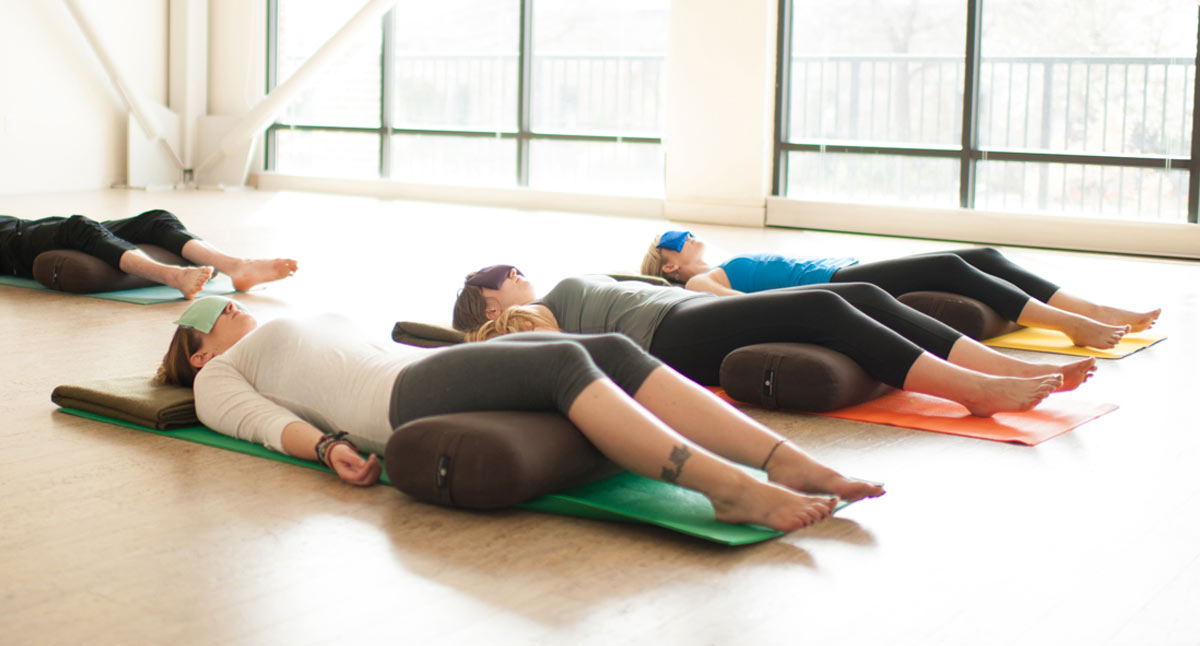
Decades ago I attended an early morning—6:00 to 7:00 am—asana class for a few months. While I’m not a natural morning person, I attended the class because it was one of only three each week that my favorite teachers offered. The class was usually vigorous, as morning classes often are. While I enjoyed the opportunity to start my day with asana practice, I always felt a bit agitated and ungrounded when I left the class. Sometimes I even felt a little nauseated. It took me a while to realize that the reason I didn’t feel so great after class was that we generally didn’t end with Savasana, or if we did, it lasted only a few minutes.
The reason for the short Savasana was that with only an hour, we needed to cram in as many poses as possible, and no one (except me) wanted to make time for Savasana. What drew me to yoga in the first place was the light, clear, quiet state of my body/mind that I felt after practice. Without Savasana, the early morning class felt like any old exercise class. It certainly got my body moving, which is positive, but it did not set me up to meet my day with quiet grace, which is why I practiced in the first place.
What Happened to Savasana?
These days I hear that in many classes, there’s either no Savasana or a few minutes at best. Why is this? Here’s my theory: I know this is going to sound strange, but Savasana is probably the most challenging pose for most people. It is challenging not because of the position itself. Lying down on one’s back with the proper support is actually pretty sweet.
Savasana is challenging because it requires a lot of your mind—more presence, patience and attention. In other poses, we’re feeling sensations in our bodies that demand our attention. In Savasana, with no body drama happening, our minds tend to wander. We get bored. And there are few things we Westerners fear more than boredom.
Sensation Junkies
I once heard meditation teacher Sylvia Boorstein say, “We are all sensation junkies.” It’s true. Think about the films, music, sports and even ways of practicing asana that are most popular. They’re all about nonstop action, one strong sensation after another. In and of itself, sensation is not a negative thing. The problem arises when we avoid quiet and subtlety, and are subsequently deprived of the necessary opposites that bring equilibrium to our lives, which is the whole purpose of practicing yoga.
When we avoid Savasana, or give it only a few cursory minutes, we deprive ourselves of the respite that provides the necessary balance to our overscheduled lives. Savasana gives our bodies a chance to integrate the benefits of the asanas we’ve practiced. This takes time.
Judith Hanson Lasater says it takes our bodies 12 to 15 minutes in Savasana to come to physiological relaxation. Physiological relaxation is just the first stage. After that, we can move into pratyahara. This is when we hear sound, feel the floor, smell whatever is in the air, but nothing that comes in through our senses disturbs our tranquility. As we deepen in pratyahara, we can taste the settling of our minds into silence. And that’s the definition of yoga.
The Proper Blend
Here’s my favorite metaphor for what Savasana does. When you cook a pot of soup or a batch of homemade tomato sauce, it often tastes better the next day. It tastes more cohesive after it’s been cooked and then left to sit a while away from the fire. That down time allows all the flavors to blend, to integrate. If you taste the soup before it has a chance to sit, often certain flavors will stand out—or even poke out. After resting, the flavors unify, each contributing a subtle essence that defines the whole. When I practiced without Savasana, my energy felt harsh and prickly. Practicing with a good, long Savasana leaves me feeling clear, bright, energized and quiet.
How Much Savasana is Enough?
If a five-minute Savasana is not enough, how long should you practice? In my home practice, I leave 15-25 minutes for Savasana. Sometimes I’m “cooked” in 15 minutes. Sometimes it takes 25. By “cooked,” I mean the state where my body feels more like a field of energy than a solid mass. My mind is fully present, but not attached to thoughts. Thoughts may be floating through—most of the time they are. But awareness experiences them as part of the present moment, fleeting and transparent.
I allow at least 15 minutes for Savasana in my classes. I sequence my classes so that by the time we get to Savasana, my students are already moving in that direction. While I’m always happy to hear when asana practice has helped resolve a knee issue or back pain, I’m happiest when I know a student has found the spacious quiet of Savasana, and can carry that equanimity into the rest of her life.
